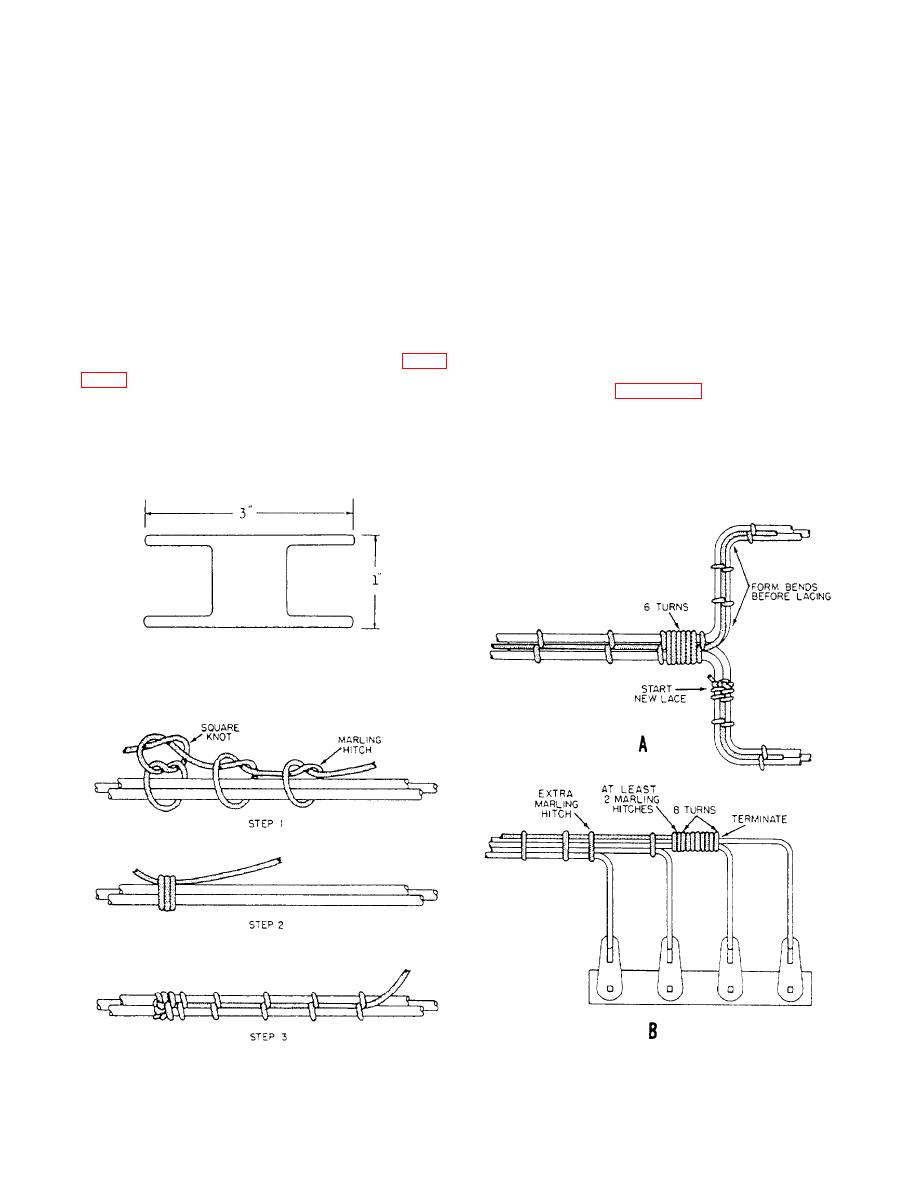 |
|||
|
Page Title:
Figure 2-57.--Applying single lace. |
|
||
| ||||||||||
|
|
 Cotton or linen cord or tape must be prewaxed to make
To fill the shuttle for single lace, measure the cord,
it moisture and fungus resistant. Nylon cord or tape
cut it, and wind it on the shuttle. For double lace,
may be waxed or unwaxed; glass fiber cord or tape is
proceed as before, except double the length of the cord
usually unwaxed.
before winding it on the shuttle, and start the ends on
the shuttle to leave a loop for starting the lace.
The amount of flat tape or cord required to single
lace a group of conductors is about 2 1/2 times the
Some installations, however, require the use of
length of the longest conductor in the group. Twice
twisted wires. One example is the use of twisted pairs
this amount is required if the conductors are to be
for the ac filament leads of certain electron tube
double laced.
amplifiers. This minimizes the effect of radiation of
their magnetic field and helps to prevent annoying
Before lacing, lay the conductors out straight and
hums in the amplifier output. You should duplicate the
parallel to each other. Do not twist them together.
original layout when replacing such twisted leads and
Twisting makes conductor lacing and tracing difficult.
when relating and wiring harness.
A shuttle on which the cord can be wound will
keep the cord from fouling during the lacing
with a square knot and at least two marling hitches
operations. A shuttle similar to the one shown in figure
drawn tight. Details of the square knot and the marling
hitch are shown in figure 2-57. Do not confuse the
fiber, or plastic scrap. Smooth the rough edges of the
marling hitch with a half hitch. In the marling hitch,
material used for the shuttle to prevent injury to the
the end is passed over and under the strand (step 1).
operator and damage to the cord.
After forming the marling hitches, draw them tight
against the square knot (step 2). The lace consists of a
2-50
|
|
Privacy Statement - Press Release - Copyright Information. - Contact Us |